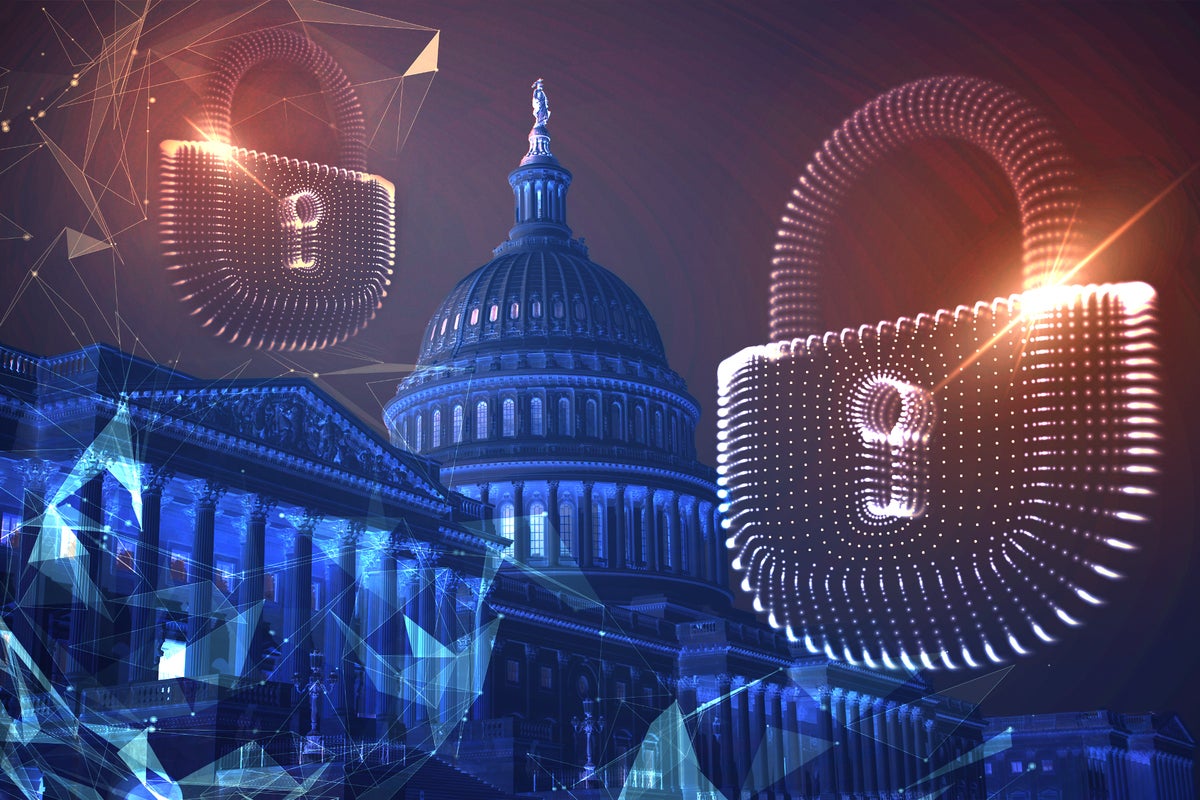New Year’s resolutions for cloud pros

We live in days when cloud skills are defined by specialization. People aren’t
just cloud database experts, they are experts on a specific cloud database on a
specific cloud provider. The same can be said for cloud-based business
intelligence, a specific SaaS provider, or cloud operations focused on a
specific OS configuration. We seem to fall into niches. This limits your options
if your specific cloud technology becomes less popular. It’s better to have a
skill waiting in the wings than to learn one at the last minute. Look at job
sites to see what skills are most in demand that are somewhat related to your
current skills and obtain the basic chops that will allow you to talk your way
into a new gig if needed. For instance, if you’re focused just on a single cloud
object database, perhaps learn about one or two other object databases on
another cloud provider. This should be a relatively easy transition given that
the concepts are much the same. You can diversify even more, such as
learning about cloud-native development if you’re currently a cloud developer.
The one real problem with synthetic media

Synthetic media promises a very near future in which advertisements are custom
generated for each customer, super realistic AI customer service agents answer
the phone even at small and medium-sized companies, and all marketing,
advertising and business imagery is generated by AI, rather than human
photographers and graphics people. The technology promises AI that writes
software, handles SEO, and posts on social media without human intervention.
Great, right? The trouble is that few are thinking about the legal
ramifications. Let’s say you want your company’s leadership to be presented on
an “About Us” page on your website. Companies now are pumping existing selfies
into an AI tool, choosing a style, then generating fake photos that all look
like photos taken in the same studio with the same lighting, or painted by the
same artist with the same style and palate of colors. But the styles are often
“learned” by the AI by processing (in legal terms) the intellectual property
of specific photographers or artists.
The Curious Case of Linux: It’s for Everyone, but Nobody Uses it

There are three main reasons that users shy away from using Linux. The first
is the perceived unintuitiveness of the OS, which is the biggest fear of new
users. The second is the lack of support for applications, games, and devices
– a problem that has plagued Linux forever. The third, and most questionable,
is the toxic fanbase associated with the operating system, which commonly
undermines the efforts of newcomers to the ecosystem. Command line interface
nightmares are the most-quoted reasons for newcomers to join the ecosystem. In
addition to this, software developers rarely optimise applications for use in
Linux, making compatibility a nightmare for creators and power users. To
combat this, the community has come up with distros that inherently require
less technical know-how than others. One of the best examples of this is
Pop!_OS. ... Another major problem that average users have with Linux is not
only the lack of software, but a lack of support for games.
Building Security Champions
A Security Champion is a team member that takes on the responsibility of
acting as the primary advocate for security within the team and acting as the
first line of defense for security issues within the team. Or, more plainly:
The person who is most excited about security on a team. They want to read the
book, fix the bug, or ask security questions. Every time. Security champions
are your communicators. They deliver security messages to each dev team,
teaching, sharing, and helping. They are your point of contact, delivering
messages to and from the security team and keeping you up to date on what
matters to your team. They are your advocate. They perform security work, for
their dev team, with your help. They also advocate for security, asking
questions in situations you would have been left out of. Raising concerns you
might have missed. They are a peer for everyone on their team and can
influence in ways that you yourself cannot. In the next few paragraphs, we
will cover how to build an amazing security champions program!
Italian Healthcare Group Targeted in Data-Leaking Shakedown

The criminals claim they reached out directly to hospital staff: "We has
also ask some of employees during phone calls about the incident but they
answered that they didn't heard about any breach. So, they were asked to
review the evidence in Live Chat and we have repeatedly tried to make it
clear that hundreds of thousands of personal data have been compromised due
to their negligence." The criminals add: "Our advise is to replace the
entire IT staff and have them undergo proficiency tests and check them for
budget wasting as well." Take all such posturing and self-serving
announcements with a big grain of salt, says Brett Callow, a threat analyst
at security firm Emsisoft who closely tracks ransomware groups' activities.
... "Why do they do this? It's all about PR and branding. They think that
organizations may be less likely to want to hand money to the type of evil
criminals who are happy to put lives at risk by carrying out financially
motivated attacks on hospitals."
Workplace Trends You Need to Know for 2023
As we near the end of 2022, a shift is happening — for the better. The U.S.
Surgeon General reported that 71% of employees believe their employer is
more concerned about their mental health and wellbeing than ever before.
This is a huge step forward and one we must grasp and run with. In response,
the U.S. Surgeon General released a framework that aims to support
workplaces in better improving the mental health and wellbeing of their
employees. This includes: Ensuring there is an opportunity for growth,
valuing employee contributions, enhancing social connections in the
workplace and focusing on achieving better work-life integration. We're
likely to see more mental wellbeing initiatives and strategies employed
across businesses that deliver meaningful and practical help to their
employees — from self-care days off once a month to increased wellbeing
benefits, mental health first aid training and even adaptations to the
workplace.
US Congress funds cybersecurity initiatives in FY2023 spending bill

The bill stipulates that no government agency may use their funds to buy
telecom equipment from Chinese tech giants Huawei or ZTE for “high or
moderate impact information systems,” as determined by the National
Institute of Standards and Technology (NIST). It further states that
agencies cannot use any of their funds for technology, including
biotechnology, digital, telecommunications, and cyber, developed by the
People’s Republic of China unless the secretary of state, in consultation
with the USAID administrator and the heads of other federal agencies, as
appropriate, determines that such use does not adversely impact the national
security of the United States. Moreover, no agency can spend funds on
entities owned, directed, or subsidized by China, Iran, North Korea, or
Russia unless the FBI or other appropriate federal entity has assessed any
risk of cyber espionage or sabotage associated with acquisitions from these
entities. ... Finally, the bill amends the Federal Food, Drug, and Cosmetic
Act to make medical device makers meet specific cybersecurity
standards.
Cloud Adoption Plans Accelerate, Highlighting Need for Qualified IT

As organizations transition to providing digital solutions in a digital
workplace, public, multi, and hybrid cloud adoption is on the rise. Farid
Roshan, global head of digital enablement practice at Altimetrik, says the
transitional data center mindset leads to high sunk costs for procuring
appliances and difficulty in attaining talent to support data center
maintenance activities. “Organizations lose precious time and energy
focusing on managing infrastructure vs. building products that bring value
to their customers,” he says. From his perspective, public cloud platforms
provide IT teams the ability to focus on creating innovative solutions and
attracting highly skilled talent to develop products that drive business
growth, while reducing overall IT cost of ownership. Roshan adds cloud
adoption can lead to unexpected delays and failure in transforming
organizations if the cloud strategy is not well understood across the
organization. “Understanding the goals for moving to the cloud as well as
implementing an executive cloud strategy, defining a roadmap and OKRs, will
allow for business and IT groups to align their annual and quarterly goals,”
he says.
What is the role of the data manager?

The data manager’s function is essentially to oversee the value chain and
ensure data is delivered effectively, says Carruthers. “This means helping
create data which is accessible, usable and safe. Information can then be
delivered to the right place and in a good condition so it can be used in
the most effective way possible.” Carruthers compares the role of data
manager to the conductor in an orchestra. “The manager is there to oversee
the whole data team, rather than frantically trying to play every instrument
themselves. As the orchestra analogy suggests, it is a data manager’s role
to ensure the song sheet is followed by every team member. This means
managing the use of data to ensure it goes through the correct value chain.”
The data manager role is not just about being “good with data”. It involves
a combination of technical and interpersonal skills, says Andy Bell, vice
president global data product management at data integrity specialist
Precisely. As well as technical skills, he says data managers need to have
“a thorough understanding about the application of technology”.
Cybercriminals create new methods to evade legacy DDoS defenses
Attackers will continue to make their mark in 2023 by trying to develop new
ways to evade legacy DDoS defenses. We saw Carpet Bomb attacks rearing their
head in 2022 by leveraging the aggregate power of multiple small attacks,
designed specifically to circumvent legacy detect-and-redirect DDoS
protections or neutralize ‘black hole’ sacrifice-the-victim mitigation
tactics. This kind of cunning will be on display as DDoS attackers look for
new ways of wreaking havoc across the internet and attempt to outsmart
existing thinking around DDoS protection. In 2023, the cyberwarfare that we
have witnessed with the conflict in Ukraine will undoubtedly continue. DDoS
will continue to be a key weapon in the Ukrainian and other conflicts both to
paralyse key services and to drive political propaganda objectives. DDoS
attack numbers rose significantly after the Russian invasion in February and
DDoS continues to be used as an asymmetric weapon in the ongoing struggle.
Quote for the day:
"If you don't demonstrate leadership
character, your skills and your results will be discounted, if not
dismissed." -- Mark Miller
No comments:
Post a Comment